サイトのPV数をARMAモデルで推定してみる
前回、電力量をARIMAモデルを使ってpythonで推定してみたいと意気込んでいたんですが、まずは基本となるARMAモデルを使ってみるべきだろうと思いまして検証してみました。ARMAモデルに使用できそうなデータを探していたところ、『とあるサイト』のPV数がちょうど良さそうでしたので、PV数をARMAモデルを使って推定してみます。
%pylab
import pandas as pd
import pandas_datareader.data as pdr
import numpy as np
import matplotlib.pyplot as plt
import statsmodels.api as sm
jbcpv = pd.read_csv("C:\\Users\jbc20170101-20170228.csv",skiprows=1, names=['Date', 'PV']).dropna()
tmd = pd.to_datetime(jbcpv['Date'])
jbcpv.index = tmd
del jbcpv["Date"]
jbcpv.plot()
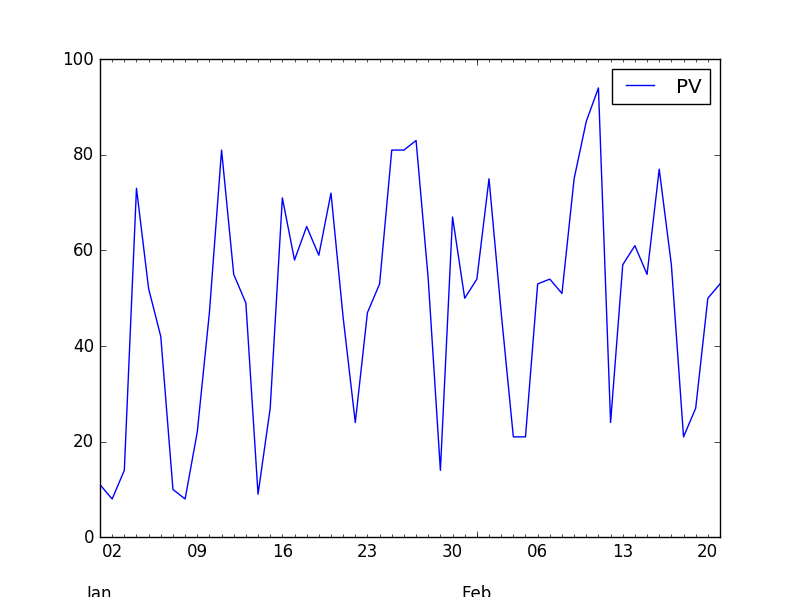
PV数のグラフです。『とあるサイト』というのはこのブログのことなんですけれど、
こうして見るとアクセス数はしょぼいですね。
plt.close() fig = plt.figure(figsize=(8,6)) ax1 = fig.add_subplot(2,1,1) fig = sm.graphics.tsa.plot_acf(jbcpv['PV'].squeeze(), lags=20, color='lightgray',ax=ax1) ax2 = fig.add_subplot(2,1,2) fig = sm.graphics.tsa.plot_pacf(jbcpv['PV'].squeeze(), lags=20, color='lightgray',ax=ax2)
自己相関と偏自己相関です。自己相関と偏自己相関からARMAモデルを決めるのには
やり方があるみたいです。
モデル | 自己相関関数 | 偏自己相関関数 --------------------------------------------------- AR(p) | 徐々に消滅 | ラグp以降切断 MA(q) | ラグq以降切断 | 徐々に消滅 ARMA(p,q) | 徐々に消滅 | 徐々に消滅
■参考
https://www.i-juse.co.jp/statistics/jirei/sympo/10/arima-model.html
しかし、正直どう選択すればよいかわからないですね。
なので適当に怪しいものをいくつか選んでみました。(何か良いやり方はないんですかね)
plt.close() arma_mod0001 = sm.tsa.ARMA(jbcpv['PV'], order=(0,1)) arma_mod0101 = sm.tsa.ARMA(jbcpv['PV'], order=(1,1)) arma_mod0100 = sm.tsa.ARMA(jbcpv['PV'], order=(1,0)) arma_mod0107 = sm.tsa.ARMA(jbcpv['PV'], order=(1,7)) arma_res0001 = arma_mod0001.fit(trend='nc',disp=-1) arma_res0101 = arma_mod0101.fit(trend='nc',disp=-1) arma_res0100 = arma_mod0100.fit(trend='nc',disp=-1) arma_res0107 = arma_mod0107.fit(trend='nc',disp=-1) arma_res0001.aic, arma_res0001.bic Out[8]: (522.5572544975417, 526.45974193470465) arma_res0101.aic, arma_res0101.bic Out[9]: (484.5235209007709, 490.3772520565152) arma_res0100.aic, arma_res0100.bic Out[10]: (485.7470013509096, 489.64948878807246) arma_res0107.aic, arma_res0107.bic Out[11]: (481.1582243120612, 498.71941777929402)
AICとBICが最小になるものを選ぶようですが、今回はAICが一番最小だったarma_res0107を選んでみました。
print(arma_res0107.summary()) #reportで出力
ARMA Model Results
==============================================================================
Dep. Variable: PV No. Observations: 52
Model: ARMA(1, 7) Log Likelihood -231.579
Method: css-mle S.D. of innovations 19.414
Date: Thu, 02 Mar 2017 AIC 481.158
Time: 22:20:50 BIC 498.719
Sample: 01-01-2017 HQIC 487.891
- 02-21-2017
==============================================================================
coef std err z P>|z| [0.025 0.975]
------------------------------------------------------------------------------
ar.L1.PV 0.9883 0.015 67.049 0.000 0.959 1.017
ma.L1.PV -0.4419 0.117 -3.792 0.000 -0.670 -0.213
ma.L2.PV -0.4104 0.144 -2.860 0.006 -0.692 -0.129
ma.L3.PV -0.1250 0.157 -0.799 0.429 -0.432 0.182
ma.L4.PV -0.2472 0.175 -1.415 0.164 -0.589 0.095
ma.L5.PV 0.1288 0.163 0.789 0.435 -0.191 0.449
ma.L6.PV 0.1415 0.126 1.126 0.266 -0.105 0.388
ma.L7.PV 0.3220 0.134 2.410 0.020 0.060 0.584
Roots
=============================================================================
Real Imaginary Modulus Frequency
-----------------------------------------------------------------------------
AR.1 1.0118 +0.0000j 1.0118 0.0000
MA.1 0.9712 -0.2382j 1.0000 -0.0383
MA.2 0.9712 +0.2382j 1.0000 0.0383
MA.3 0.2127 -1.2002j 1.2189 -0.2221
MA.4 0.2127 +1.2002j 1.2189 0.2221
MA.5 -1.1392 -0.0000j 1.1392 -0.5000
MA.6 -0.8341 -1.0674j 1.3547 -0.3556
MA.7 -0.8341 +1.0674j 1.3547 0.3556
-----------------------------------------------------------------------------
これをみてもよくわかりませんね。
つぎに、モデルの妥当性を検討してみます。
まず残差の確認をしてみます。
resid = arma_res0107.resid resid.plot()
差が少なければいいらしいですが、これも良いのか悪いのか、よくわかりませんね。
つづきまして残差の自己相関と偏自己相関を調べてみます。
plt.close() fig = plt.figure(figsize=(8,6)) ax1 = fig.add_subplot(211) fig = sm.graphics.tsa.plot_acf(resid.values.squeeze(), lags=20, ax=ax1) ax2 = fig.add_subplot(212) fig = sm.graphics.tsa.plot_pacf(resid, lags=20, ax=ax2) fig.show()
では予測をグラフにしてみます。
plt.close()
fig, ax = plt.subplots()
ax = jbcpv.ix['2017-01-01':].plot(ax=ax)
arma_res0107.plot_predict('2017/2/18', '2017/2/28', dynamic=False, ax=ax,plot_insample=False)
おお!なんかそれっぽいグラフができました!自分としてはイイ感じに思えるのですけれど、どうなんでしょうか?その道のプロの人からすると、全然ダメとかあるのでしょうかね?まーでも、視覚的にみると面白いですね。時系列データはネット上から取得できるので、今後もいろいろ試してみたいと思います。
■参考
時系列分析II―ARMAモデル(自己回帰移動平均モデル)の評価と将来予測
http://www.atmarkit.co.jp/ait/articles/1409/01/news006.html
Autoregressive Moving Average (ARMA): Sunspots data
http://statsmodels.sourceforge.net/devel/examples/notebooks/generated/tsa_arma_0.html
関連する投稿:
- 2017-03-17:SARIMAXモデルでPVを予測してみる
- 2017-03-25:SARIMAX vs. Random Forest Regression -ブログのセッション数の予測-
- 2017-02-24:電力データから季節変動の分解
- 2017-03-14:季節調整済みARIMAモデルで電力使用状況を推定してみる part2 予測表示
- 2014-08-23:Pythonで回帰分析 (身長と体重の関係、PVとセッションの関係)
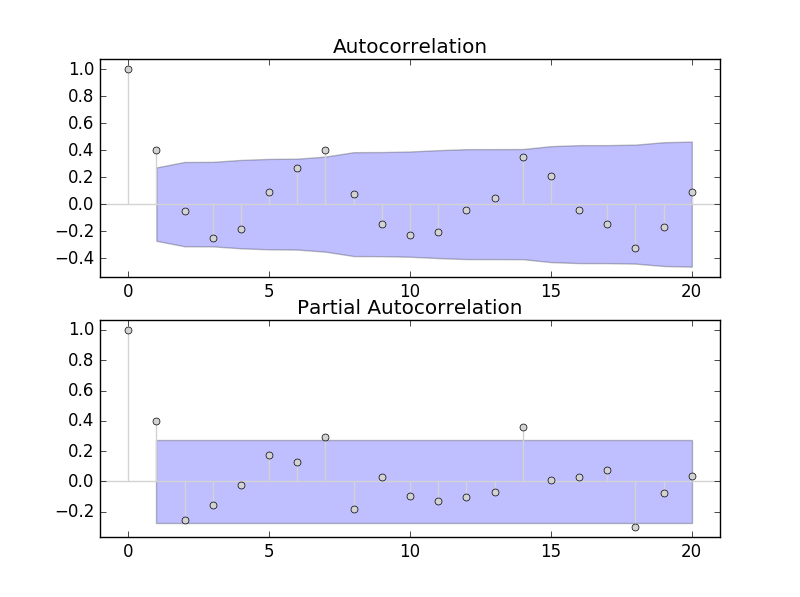
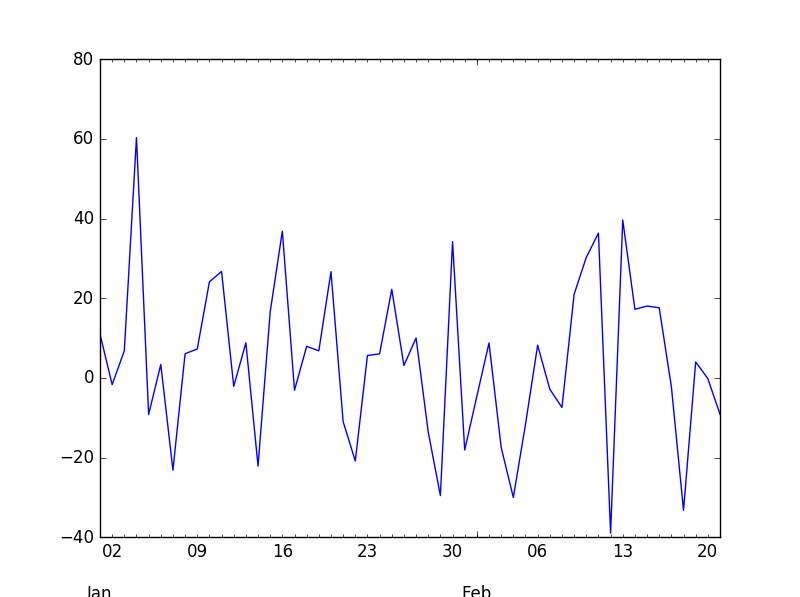
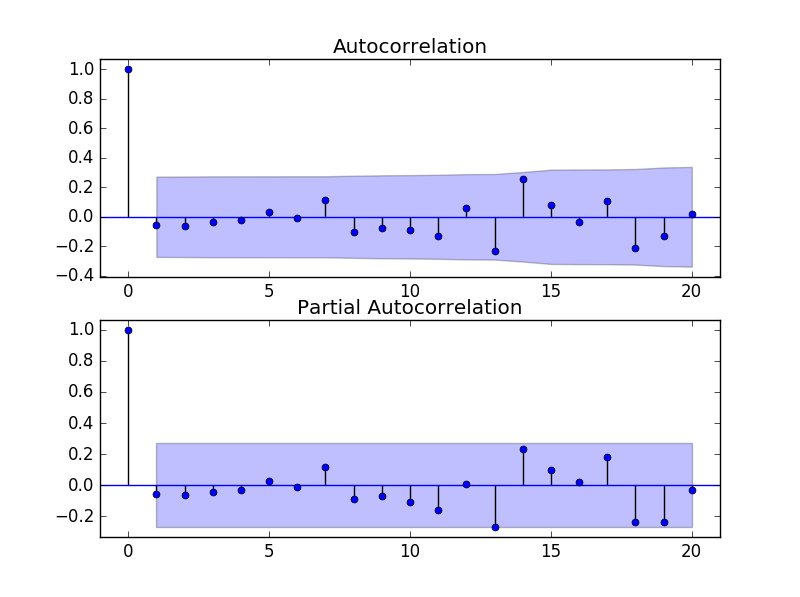
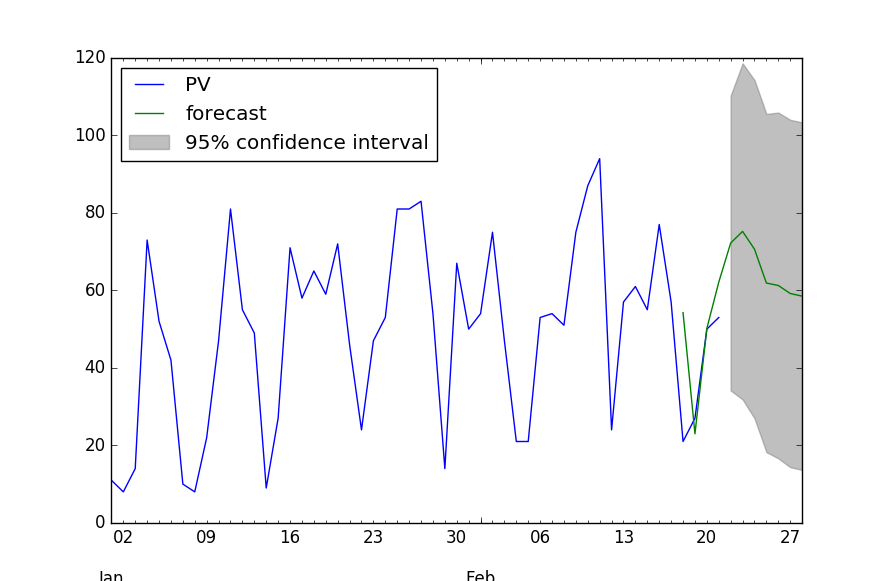
“サイトのPV数をARMAモデルで推定してみる” への1件の返信